Cooking with Lilacs
Picking and Sharing: Timing is everything
I have been experimenting with floral preserves for the last couple of seasons but this is the first time I have tried anything learned lilacs. I recently learned of their versatility as food flowers after happening on a blog post. A little research uncovered more recipes and plenty of guidelines on use. Generally, I am not an enthusiastic cook but when it comes to preserving things growing in and around my garden, I am eager to explore new ways to capture all the goodness.
The first thing to note is that I never take more than 50% of the flowers on any stem; I have a deal with the bees, a deal that I frequently remind them of when they are buzzing around as I pick the flowers. Also to support the pollinators, I don’t harvest the plants until they are starting to fall or about to fall, which often means I am doing at least some of the picking in the rain and/or wind. It is a fine balance because the flowers are best for picking when they are at their peak so you can’t wait too long. Lilacs have such a short time in bloom that timing is crucial. I was in luck this year as I found the recipes and resources just as our flowers were opening. They won’t keep very long once they are picked so I had to put aside any other plans for a couple of full days.
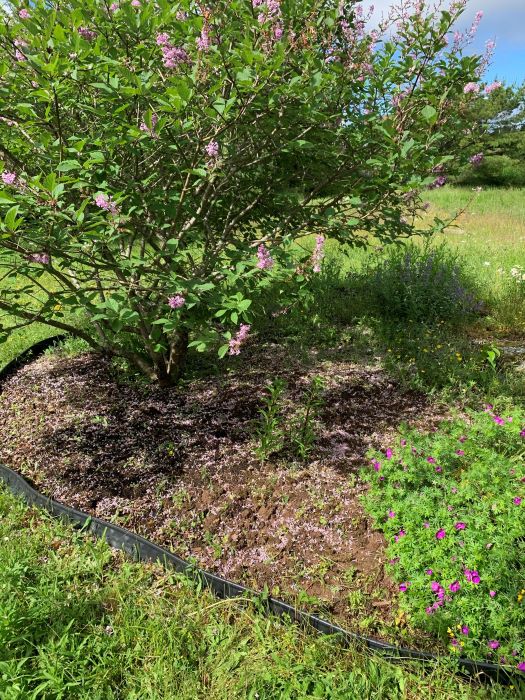
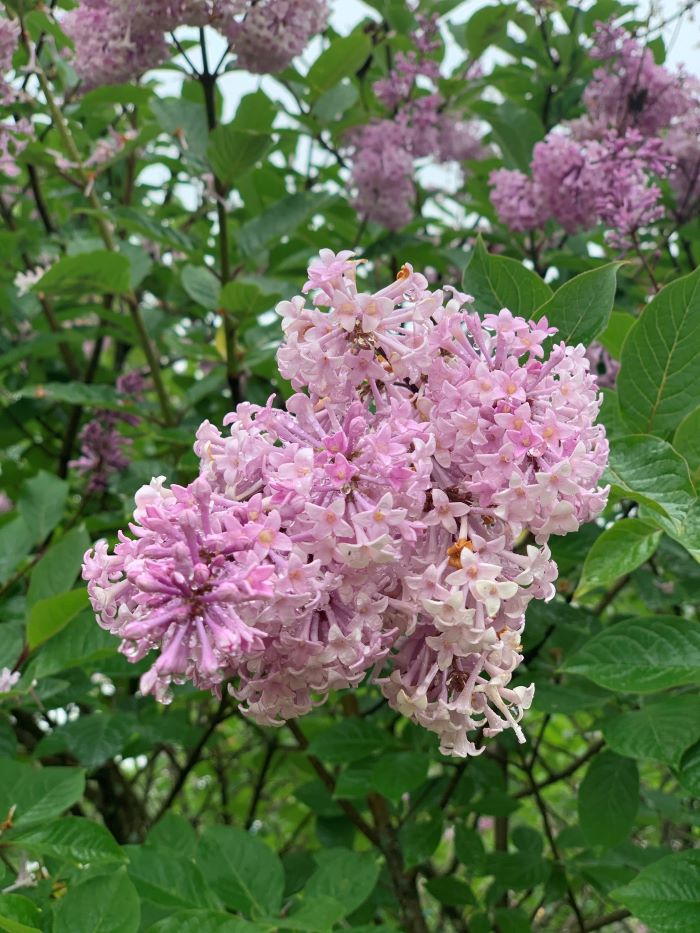
The weather forecast called for rain just as lilacs were ready to pick. I picked what I thought I needed in the evening, and by the next morning, most of the remaining ones had fallen to the ground, which could make them easier to harvest but also a much higher percentage of discards – not to mention and more dirt and bugs.
Preparation
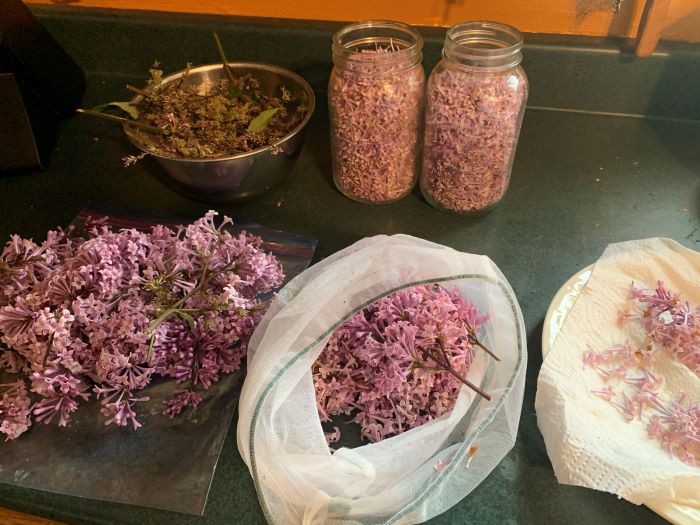
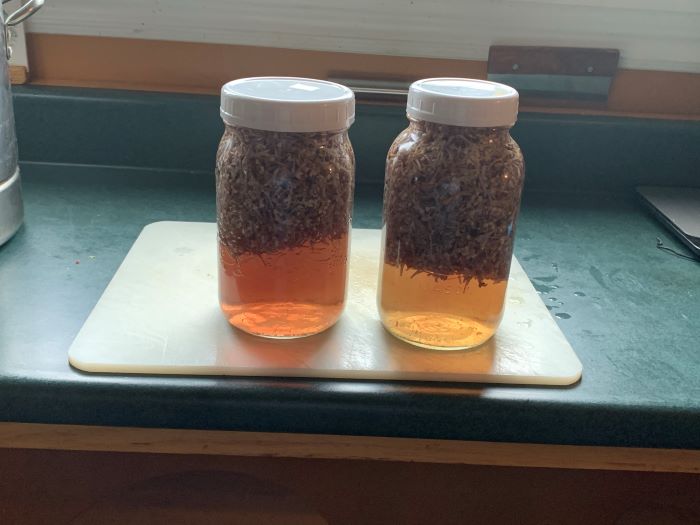
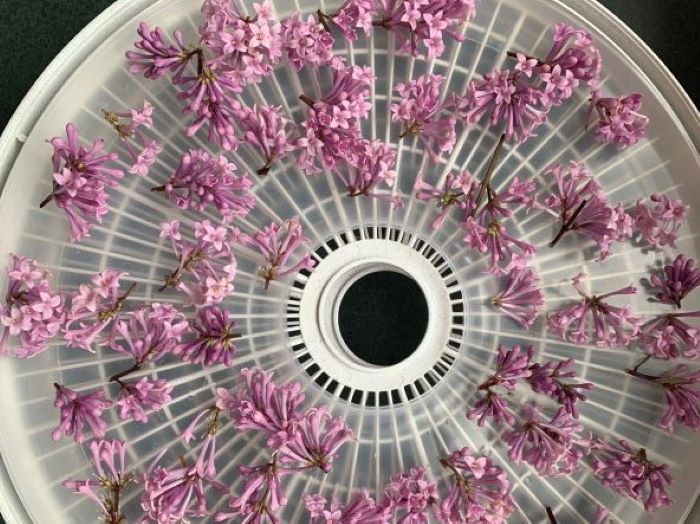
Processing florets- washed, dried, sorted.
Steeping in hot water for lilac-infused water to be used in jelly.
Filled trays on the dehydrator. Dried florets for potpourri gifts and dried single flowers for lilac tea.
The fun part – Tasty Treats
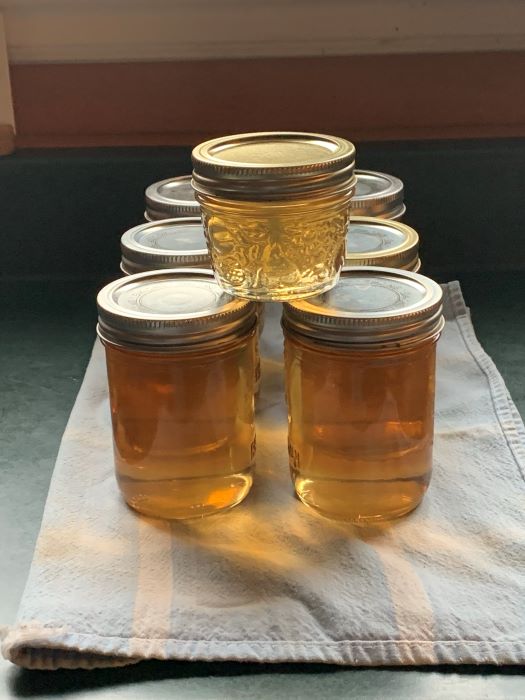
Lilac Jelly
The jelly looks lovely but not at all like lilacs. Lemon juice usually brings back some of the colour in floral jellies but it didn’t work with the lilacs. From the pictures that I have seen, it seems to work better if you have lilacs varieties that are a deeper purple. As you can see, ours are quite light in colour I tried adding some blueberries to the second batch but not only did it not add colour, but it meant that I had to filter through a jelly bag to get clear jelly.
TIP: Next batch, I will try a tablespoon or two of blueberry or blackberry juice rather than full fruit. I think that will blend better and still not give too strong a flavour.
I found a number of different jelly recipes with different ratios and played with them based on different jellies I have made. Follow general canning tips or make to keep in the fridge. I used:
4 Cups Lilac tea / infused water
6.5 Cups sugar (a ratio I have found works well for set)
3 TB lemon juice
1 pouch of liquid pectin (that is what I had on hand)
This gave me 6 1/2 pints (6x 250 ml jars plus 1×125 ml jar) plus one small tester.
NOTE: In my experience, florals have a very light set. Sometimes they can almost serve as a sauce. This batch jelled very nicely but for a firmer set, best to serve cold
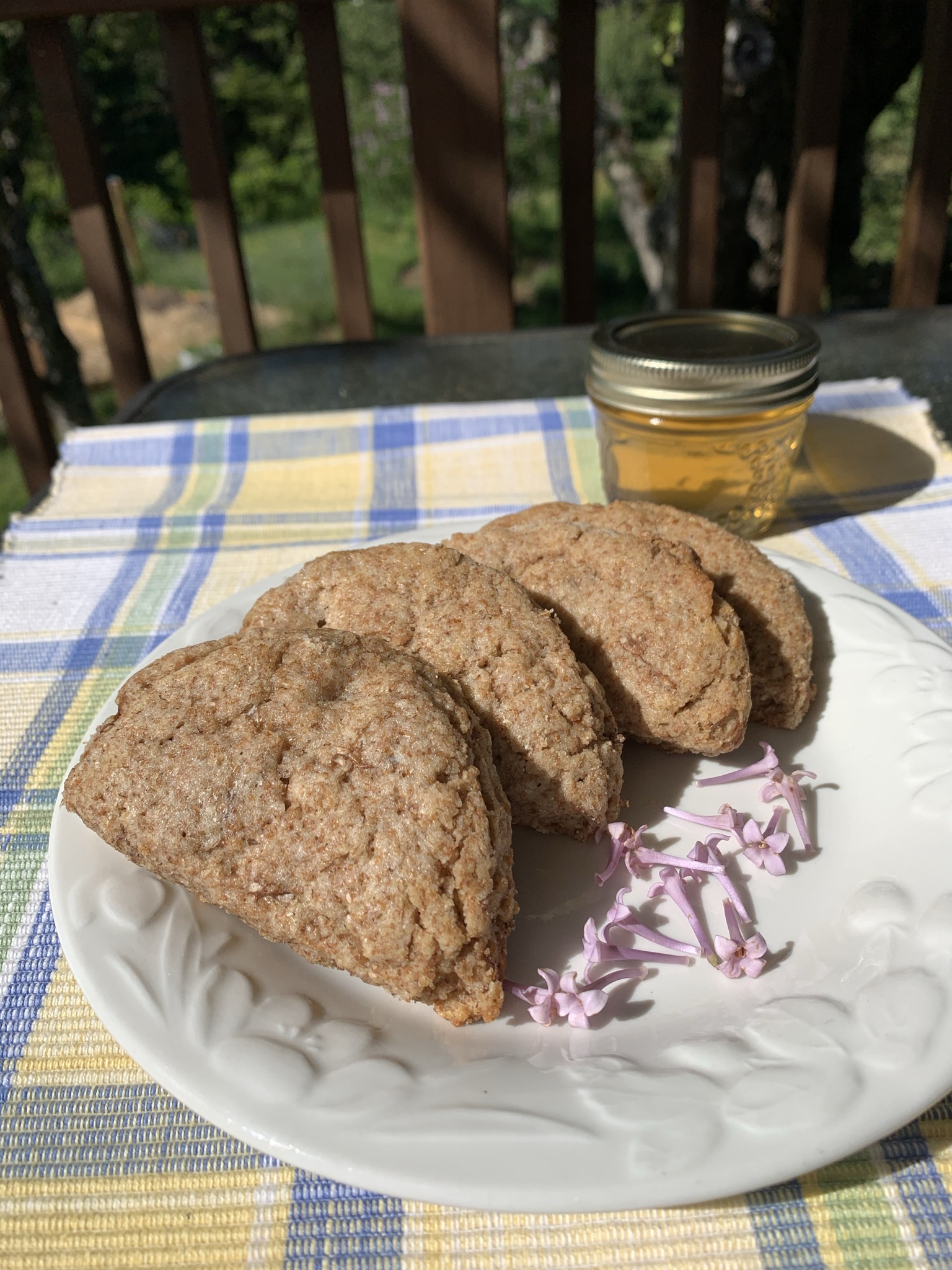
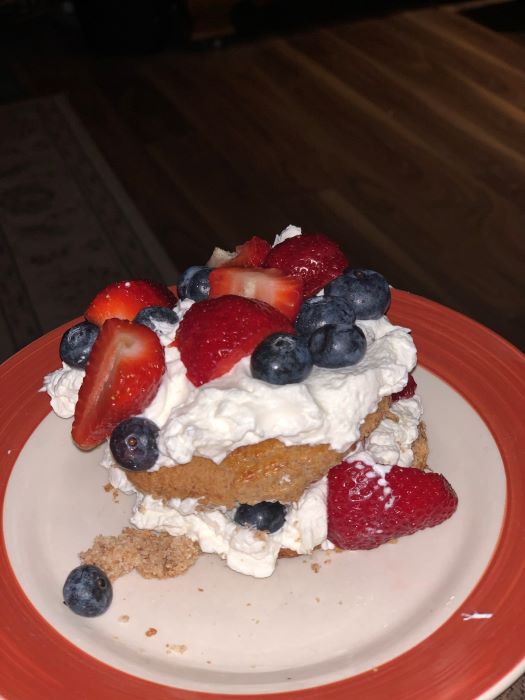
Lilac scones with lilac jelly presented with fresh lilac flowers in season. The lilac jelly has a lovely floral scent and a subtle flavour. The scones freeze really well so you can save some for winter and have them with some warm tea and your favourite homemade jam.
Shortcake – Nova Scotia strawberries and blueberries with whip cream made with a little lilac sugar, all served on lilac scones. The scones also go well with clotted cream or butter.
Lilac Sugar
Use some of your flowers to make lilac sugar, which you can use in many recipes. It will preserve the flowers for several months.
To make lilac sugar:
- Separate and wash flowers. Use only flowers – stems and leaves will make it bitter.
- Dry completely (a salad spinner is a good way to remove water and even small bugs). Be sure that they are dry before adding to the sugar.
- Mix with a ratio of 1 unit of lilac to 3 units of sugar.
- Shake daily for about 7 days to prevent clumping as the sugar removes moisture from the flowers. Mixing in a mason jar works well for this because it is easy to cover and shake.
- Separate the flowers if you like (I left them in for colour).
- You can use the lilac sugar to replace sugar in any recipe for a slightly different flavour. Works really well in shortbreads or oatcakes and bet it would be delicious in a pound cake, though I haven’t tried that (yet).
Edible Flowers
I have been really enjoying learning more about edible flowers. I like the idea of making use of all that grows in the garden as much as possible. I’m also trying some experiments with fabric dyeing from the garden and wild flowers – more on that another day.
I will definitely be doing more with flowers this season. So far, they mostly have a mild flavour and wonderful scent. And, by the way, the kitchen smells delightful when you cook with flowers. Next up is wild roses. Last year in addition to ones on our property, I picked some wild by an ocean beach in Martinique, just for a special addition. After the roses, the next selection will probably be fireweed, which grows around the perimeter of our property, mixed in with goldenrod – and lots of bees.
If you have experimented with edible flowers, I would love to hear about your experiences – and any favourite recipes or uses. Please share in the comments.


0 Comments